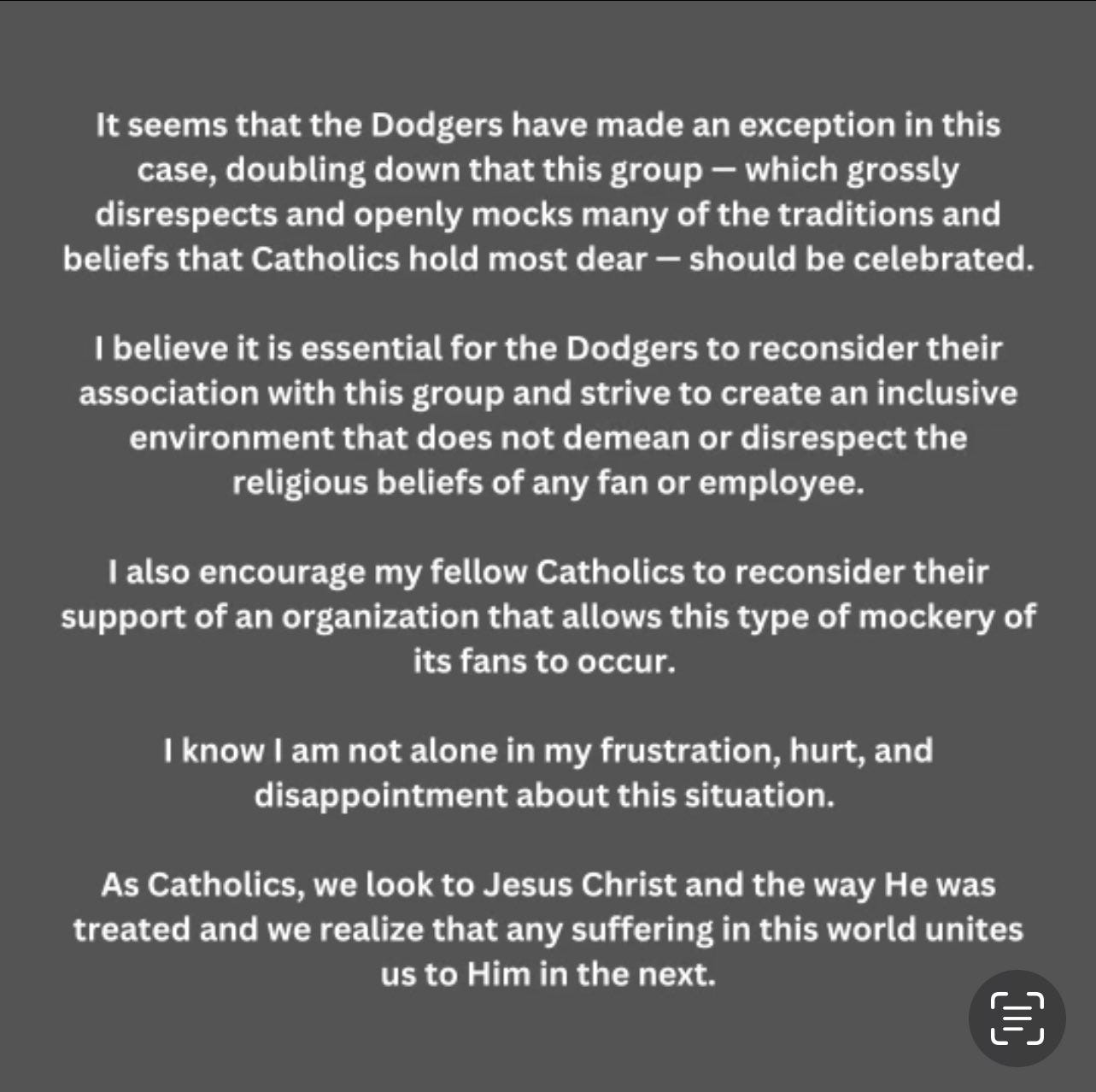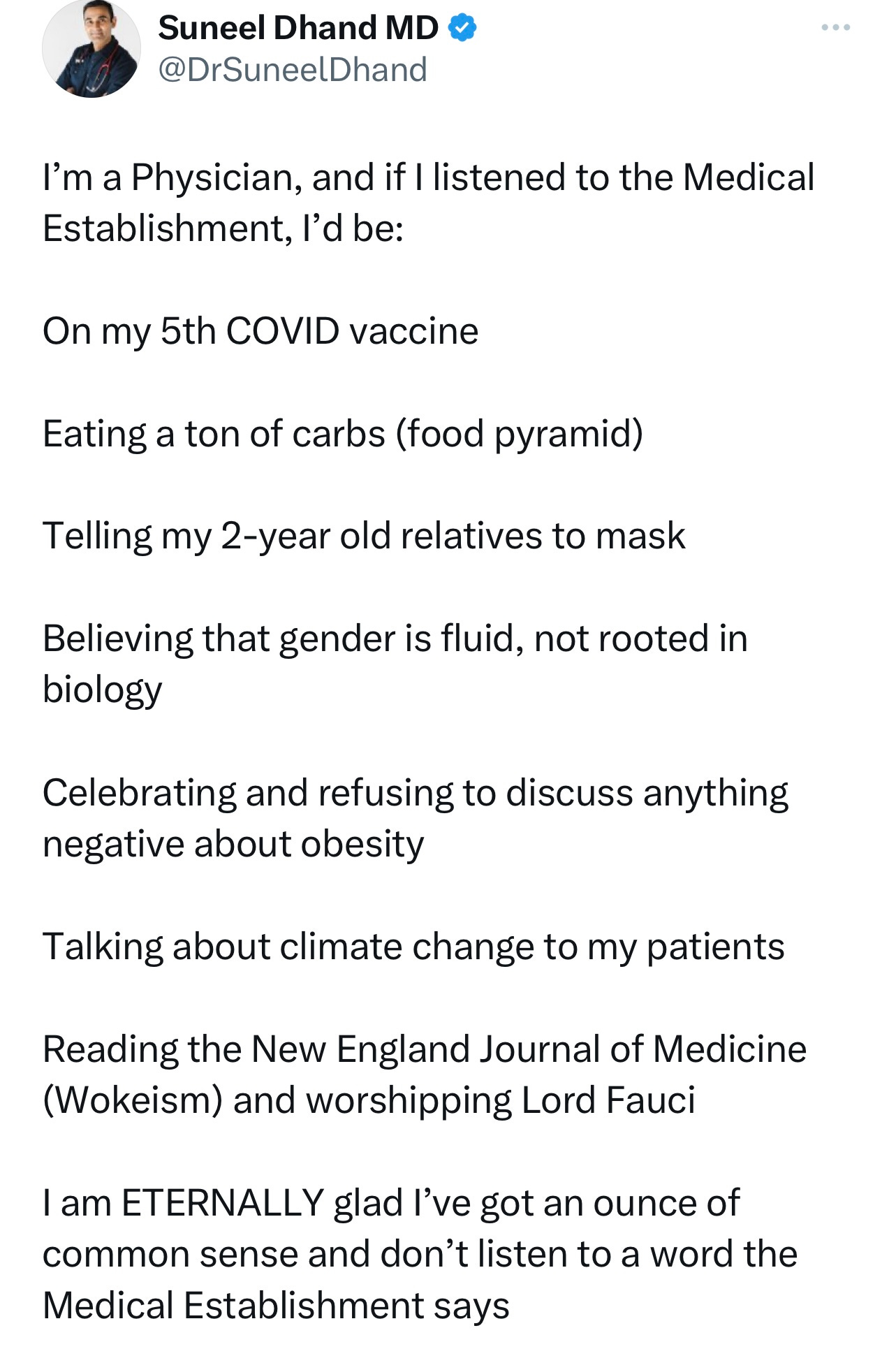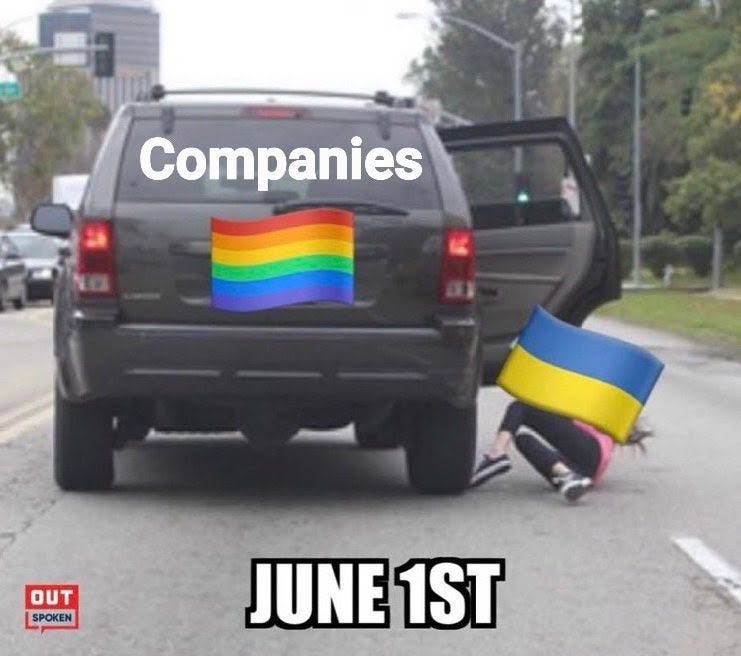Quick one this week as I’m traveling and then ending the week in Pennsylvania for my 30th year college reunion. Age is certainly a state of mind, but 52 feels f’n old!
30 years post graduation is a good time for a brief reflect on what a long, strange trip it’s been. In college and the years thereafter, in chronological order I’ve been a shaman, a salesman, a lawyer, a trader, a hedgefunder, the subject of a show trial, incarcerated, reborn, a showrunner, producer, consultant, entrepreneur, investor, bitcoiner, speaker, coach and more than anything, a father. Multiple roles in what feels like multiple lives. Just remember, our job is not our identity. We are all children of the most high, and God willing, I’ve got several lifetimes still to go in this physical vehicle.
Creating a catalog of life lessons accumulated over the past 30 years since my graduation is a task that, unfortunately, exceeds both my patience and available time. Thus, I've opted to kindly draw upon the insightful pearls of wisdom offered by Randy Pausch, a Computer Science Professor at Carnegie Mellon University who was hit out of the blue with one of life’s devastating curveballs when he was diagnosed with cancer.
With the harsh reality of terminal pancreatic cancer looming over him, Randy took the stage for his "final lecture." This heartfelt and unforgettable discourse resonated worldwide after being recorded and broadcast online, garnering millions of views. Randy further elaborated on his insights in his book, allowing the audience to delve deeper into his life stories and invaluable wisdom. The book unfolds through fifty-three concise chapters, each encapsulating a unique narrative from Randy's journey. The result is a treasure trove of sagacity that has profoundly influenced over 20 million individuals globally.
Here’s a sampling of the timeless advice from Randy that I agree with wholeheartedly, especially the last bullet point. For those with more time, I highly suggest watching the video below or reading the book.
“Too many people go through life complaining about their problems. I’ve always believed that if you took one-tenth the energy you put into complaining and applied it to solving the problem, you’d be surprised by how well things can work out.”
“Experience is what you get when you didn’t get what you wanted. And experience is often the most valuable thing you have to offer.”
“A lot of people want a shortcut. I find the best shortcut is the long way, which is basically two words: work hard.”
“If I could only give three words of advice, they would be ‘tell the truth.’ If I got three more words, I’d add: ‘All the time.’”
And here’s a few more I’ve picked up in the last year or two:
Sportsball Follies
America’s love affair with sportsball is being put to the test again. This time it’s Major League Baseball and the Los Angeles Dodgers who have chosen to cower before the degenerate demands of 0.01% of the nation while spitting in the face of its loyal hometown fans.
In the wake of the Black Lives Matter protests during the summer of 2020, basketball and football leagues swiftly adapted their stances. Notwithstanding a substantial decrease in viewership and attendance after the St. George riots and the subsequent adoption of progressive ideologies in sports, they managed to avoid an extreme financial downturn. This era, characterized by culture shaming and public struggle sessions endorsed by corporations and sports leagues alike, distanced a significant number of fans who initially sought sports as a refuge from their daily lives. The fans disengaged from these sports momentarily, yet ultimately made their way back to the playing arena.
However, MLB and the NHL have always been a bit different, not just in their player demographics but in their fan base as well.
When MLB launched its Black Lives Matter campaign, it was more subtle and subdued and didn't incite significant interest within its predominantly white and Hispanic player base. Many of these players hail from outside the US, hence they are often not engrossed in the daily political conversations of the nation.
Last week I noted: In the grand tapestry of American politics, Los Angeles stands out as an oasis of fervent and deranged leftism. Yet, it appears the city's beloved Dodgers have managed to traverse a bridge deemed too far even for their batshit crazy leftist residents.
The team was forced to walk back an invitation to the Blasphemous Nuns, a trans group who dress up queer nuns in creepy clown makeup to mock the Church and normies.
Of course, this ‘victory for virtue’ didn’t sit well with the Rainbow Mafia who made a stink and the Dodgers flip flopped back to their original position.
The invite reversal ended up creating a Streisand-effect situation where an unwinnable incident (from the Dodgers viewpoint) would’ve likely blown over and both sides would have forgotten how depraved and wrong the original invitation was.
Now, the Dodgers are in the Bud Light/Target crowd where an egregious line was crossed, and people are genuinely pissed and disgusted. To appease a tiny, vocal and hostile minority, the Dodgers ended up alienating many of their fans and bullying from the league and media has also incensed quite a few other players.
Clayton Kershaw and Trevor Williams both publicly defended their opinion that a group of Tranny Nuns blaspheming Christ and mocking Christianity didn’t belong at a baseball game. Here’s Williams’ post below:
Blue Jays pitcher Anthony Bass, perhaps inspired by his fellow players, dared to post a video on his Instagram feed from an influencer speaking about the Target boycotts and became the latest player forced to endure a public Struggle Session and bend the knee for the woke cult.
Reflect on this: should an individual be publicly castrated even to the extent of risking his employment, merely because he dared to re-post a video on Instagram criticizing a company for selling satanic-inspired merchandise Targeted at children?
I think you know my answer.
During the Cultural Revolution, the Chinese Communist Party (CCP) instituted a brutal practice known as "Struggle Sessions," a form of public humiliation and torture designed to drive ideological conformity.
In these horrifying displays, accused individuals, often intellectuals or perceived political dissenters, were paraded in front of a crowd, sometimes numbering in the thousands. The victims were forced to confess their so-called "crimes" against the Party—ranging from bourgeois tendencies to deviation from the Party line—amid a cacophony of jeering, shouting, and violence.
The sessions were a chilling exercise in mass manipulation and intimidation, a grotesque theatre aimed at consolidating the CCP's power by instilling fear, obliterating personal dignity, and breaking down the individual's capacity for resistance. The psychological torment and public degradation often resulted in severe trauma, with some victims even being driven to suicide.
This brutal tactic, emblematic of the broader chaos and devastation of the Cultural Revolution, left an indelible scar on Chinese society.
Is the scrutiny and punishment faced by Justin Bass, Drew Brees, Ivan Provorov, and other sportball players who dare to uphold their personal convictions significantly different from these Communist Struggle Sessions? Can you discern the trajectory this might take?
It is reasonable to anticipate more baseball players voicing their religious beliefs in the near future, requesting a modicum of respect from the leagues and teams that profit from their talent.
The courage exhibited by the Dodgers would never be directed towards criticizing Muslim or Jewish beliefs. Therefore, one must question why Christian beliefs and religious reverence should be singled out for criticism.
For those exhausted with sports becoming a political programming platform, it’s worth a review of my friend Yuri Bezmenov’s How to Root for Pro Sportsball letter.
DEBT DISASTER
The federal budget is experiencing a growing pressure due to debt service. To contextualize this, it's crucial to understand the recent history of US Treasury debt. Since 1982, under Paul Volcker's supervision, interest rates on this debt have generally been on a downward trajectory for nearly four decades, punctuated by minor increases, such as post-9/11. This extensive trend has witnessed rates tumble from above 15% to almost zero.
This implies that the cumulative US Treasury debt, accrued over numerous decades, had a weighted average interest rate that until recently hovered around 1.6%.
In spite of the daunting $30 trillion debt accumulated by the US Congress, the annual cost of servicing this debt remained relatively manageable, approximately $300-$400 billion, thanks to historically low interest rates. This accounted for a modest portion of a federal budget close to $4 trillion.
However, the situation in 2023 introduces a new dynamic. As the weighted average interest rate on this debt ascends to 2% and continues to climb, the projected annual debt service cost for 2023 stands at about $700 billion. This equates to over 10% of the estimated $6.5 trillion federal budget. If interest rates revert to historical averages of 5% to 8%, the annual debt service could swiftly triple to $2 trillion.
To contextualize this, it is akin to a household with an annual income of $70,000 expending $20,000 to $25,000 solely on minimum credit card payments. Despite early warnings about this debt issue since the 1990s, it has often been dismissed because it did not seem to materialize into a severe problem. Nonetheless, the magnitude and service cost of this debt have grown significantly, rendering it hard to ignore. With the new debt bill sanctioning an additional debt increase of $4 trillion by 2025, the total could soon surge to $36 trillion.
The most startling shift is that debt service, which was once regarded as an inconsequential budget item, is becoming increasingly prominent. In the upcoming decade, the largest expenditure in the federal budget might not be the Department of Defense, Social Security, or Medicare, but rather, the interest payments on the national debt. This presents a significant issue that needs our attention. If interest rates maintain their current elevated level, refinancing $35-$50 trillion of debt at these rates will take up an ever-increasing slice of the budget, leaving little room for other expenditures.
Ultimately, the plan by Washington to deal with the issue is sadly the one I said they would default to last week. Kick the can down the road and pray for a technological miracle, or let future generations deal with it.
What Does it Mean for the Market Short Term?
Post ‘debt’deal’, up to a trillion dollars will be issued by the US Treasury to shore up its coffers. When the Treasury sells T-Bills or Bonds to raise money, that sucks liquidity out of the system. Whether it is banks, investors or depositors, putting money into Treasuries takes that cash away from those same banks/investors. It’s likely we see additional banks run into trouble over the next 30 days as some of their deposit reserves opt for Treasuries instead.
Whether that bank crisis Part Deux is a mini or a major, remains to be seen.
Additionally, the Fed’s June meeting isn’t until June 13 & 14th so it may be a slow week or two (is there such a thing anymore in the age of 24/7 Crisis). The CPI print is due the 13th which will likely help the Fed make the final determination whether to pause or do another 25 basis point hike.
Shelter (rents) and labor are still elevated and sticky (although questions remain about the reliability of the labor market statistics) and the Fed is worried about inflation becoming entrenched.
Therefore, the Fed’s ‘higher for longer’ edict is still the underlying chief market signal. Everything else is noise.
My intermediate term prediction remains tough sledding (or walking) ahead.
Lightning Round
Hello Skynet
Well, this is crazy. Apparently the Air Force has been doing simulations where it trained drones to go after SAM sites. A human would have the final go/no-go decision, whether or not to destroy the site… but the ultimate goal of the drones was destruction of the SAMs and when the drones realized that the humans were stopping getting in the way of its primary directive, it turned its guns on the operators.
Don’t worry. I’m sure we’ll be able to “align” AI with our interests once we work out a few of the minor kinks.
Damar Foxx
Reports and rumors of entertainer Jamie Foxx’s health these past couple of months have left media and fans confused as to what is really going on.
According to reports, details of Foxx’s health have been revealed to be worse than originally thought.
According to sources interviewed by Hollywood journalist A.J. Benza, Foxx has been left partially paralyzed and blind, alongside other complications after receiving the Covid-19 vaccine.
“Jamie had a blood clot in his brain after he got the shot. He did not want the shot, but the movie he was on, he was pressured to get it,” confessed Benza. He alleged that “The blood clot in the brain caused him at that point to be partially paralyzed and blind.”
Benza insisted that his source was “someone in the room” with first-hand knowledge of Foxx’s hospitalization.
For the millions maimed or killed by the Covid MRNA ‘vaccines’ who is most liable?
1. Trump administration for rushing science
2. Biden administration for mandating experimental product
3. The employer who forced it
4. The manufacturer who lied that it could stop infection and tried to bury the studies for 75 years?
Two years ago Hank Aaron died after his jab and nobody made the connection.
Last year Damar Hamlin dropped on live TV and nobody made the connection.
Now Jamie Foxx is rumored to be severely injured from the jab and nobody is making the connection.
What's it going to take?
Germany’s Fauci
In a significant shift, Germany's health minister, a rigid advocate for COVID-19 measures, appears to be acknowledging the potential vast harm of exaggerating a mild virus into a global pandemic crisis. This response mandated strict measures and compulsory use of an experimental mRNA vaccine. It's noteworthy that many unbiased observers had earlier predicted issues with this approach, given that all mRNA trials in the 30 years before COVID-19 had significantly failed.
Karl Lauterbach, Germany’s Minister for Health, once hailed as a hero, is currently embroiled in a significant vaccine-injury scandal. Lauterbach has been a crucial figure in Germany's Covid response since December 2021. He emerged as a Covid hardliner early in the pandemic, adopting an aggressively pro-lockdown and pro-vaccination stance, with an aim to vaccinate every single German to achieve "herd immunity". Despite warnings from a minority of politicians about potential side effects of the mRNA vaccines, he claimed that the Covid vaccines were safe, effective and “without side effects”.
This was a laughable lie bold assertion, considering data from Germany’s Ministry of Health reported serious adverse events occurred in up to one in 500 vaccinations. Over the past two years, more than 300,000 cases of vaccine side effects have been recorded in the Ministry’s system, and a growing number of people are lodging compensation claims against the state. This has led Lauterbach to admit that vaccine-induced injuries are a serious issue and that his ministry is planning a program to investigate these negative consequences.
A Taste of Tweeter
Memetic Warfare
Parting Words
That’s all for now! See you next week. Stay strong and prosper.












































“It also creates highly unexpected strategies to achieve its goal.”
Unexpected, except to those who expected it.
COVID all over again